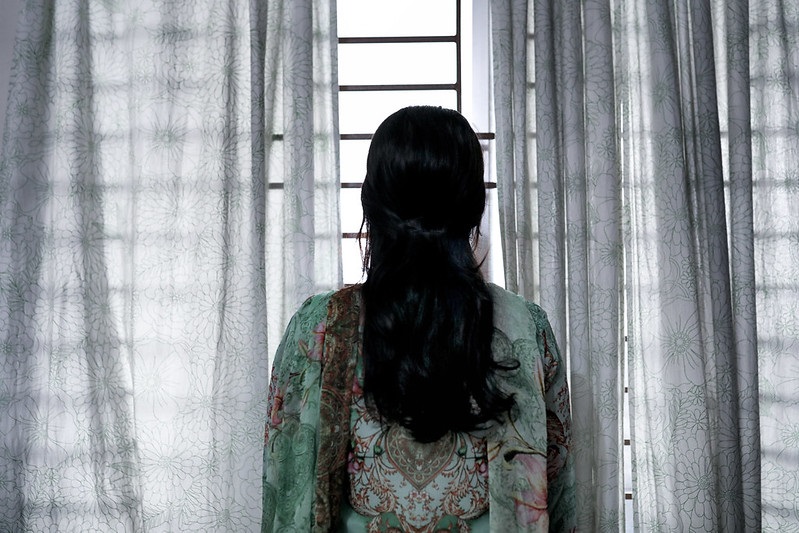

New analysis published today in The Lancet Child and Adolescent Health by the World Health Organization (WHO) finds that nearly one in four (24%) dating teenage girls – roughly 19 million – have experienced physical and/or sexual violence from an intimate partner by the time they turn 20. Nearly one in six (16%) have experienced such violence in the past year.
“For millions of young women around the world, intimate partner violence begins at an alarmingly early age,” said Dr Pascal Allotey, Director of WHO’s Sexual and Reproductive Health and Research Division. “Violence during this critical formative period can cause severe and lasting harm and needs to be taken more seriously as a public health issue, with a focus on prevention and targeted support.”
Intimate partner violence can have a devastating impact on young people’s health, academic achievement, future relationships and life prospects. From a health perspective, it increases the likelihood of injury, depression, anxiety disorders, unplanned pregnancy, sexually transmitted diseases and many other physical and mental illnesses.
Building on existing data, the study provides the first in-depth analysis of the prevalence of physical and sexual partner violence experienced by girls aged 15-19 in intimate relationships. It also identifies broader social, economic and cultural factors that increase risk.
Violence against adolescent girls occurs everywhere, but the authors note that incidence rates vary widely. WHO estimates that the highest burden is in Oceania (47%) and central sub-Saharan Africa (40%), with the lowest rates in Central Europe (10%) and Central Asia (11%). There are also significant differences between countries, with an estimated 6% of adolescent girls experiencing such violence in the lowest-burdened countries, compared with 49% in the highest-burdened countries.
New analysis shows that intimate partner violence against adolescent girls is most prevalent in low-income countries and regions where fewer girls attend secondary education and where girls have weaker legal property ownership and inheritance rights compared to men. Child marriage (before age 18) significantly increases the risk because the age difference between spouses creates power imbalances, economic dependency and social isolation, making them more likely to endure abuse.
The study highlights the urgent need to strengthen support services and early prevention measures for adolescents, alongside efforts to promote women’s and girls’ agency and rights, from school-based programs that educate both boys and girls about healthy relationships and violence prevention, to legal protection and economic empowerment. Adolescents, many of whom lack economic resources of their own, may face particular challenges in leaving abusive relationships.
“This study shows that to end gender-based violence, countries need to put in place policies and programmes that increase equality for women and girls,” said Dr Lynmarie Sardinha, WHO Technical Officer for Violence Against Women Data and Measurement and study author. “This means guaranteeing secondary education for all girls, ensuring equal property rights for men and women, and ending harmful practices like child marriage that are often underpinned by the same unequal gender norms that perpetuate violence against women and girls.”
Currently, no country is on track to eliminate violence against women and girls by the Sustainable Development Goal target date of 2030. Ending child marriage (which affects one in five girls globally) and expanding girls’ access to secondary education will be key elements in reducing intimate partner violence against adolescent girls.
WHO is supporting countries in measuring and addressing violence against women, including through efforts to strengthen health-care prevention and response. New WHO guidelines on preventing child marriage are expected to be published by the end of 2024.
Notes for editors
The study, “Intimate partner violence against adolescent girls: regional and national prevalence estimates and associated country-level factors,” analyses both the lifetime prevalence and past 12-month prevalence of physical and/or sexual partner violence against girls aged 15 to 19. Other types of violence, including psychological violence, were not included as there are no agreed-upon measures that are internationally comparable.
The study used data from the WHO Global Database on the Prevalence of Violence Against Women, published in 2018, and based on data collected from 161 countries between 2000 and 2018. A Bayesian hierarchical modelling approach was used to generate internationally comparable estimates across countries.
This research was funded by the UK Foreign, Commonwealth and Development Office through the WHO-UN Women Joint Programme on Strengthening Data on Violence Against Women and the United Nations Special Research, Development and Training Programme on Human Reproduction (HRP).
Link to article: https://www.thelancet.com/journals/lanchi/article/PIIS2352-4642(24)00145-7/fulltext
Tara Thomas Agency stands at the forefront of the entertainment industry, with years of experience dedicated to nurturing the most exceptional talents and successful acts.